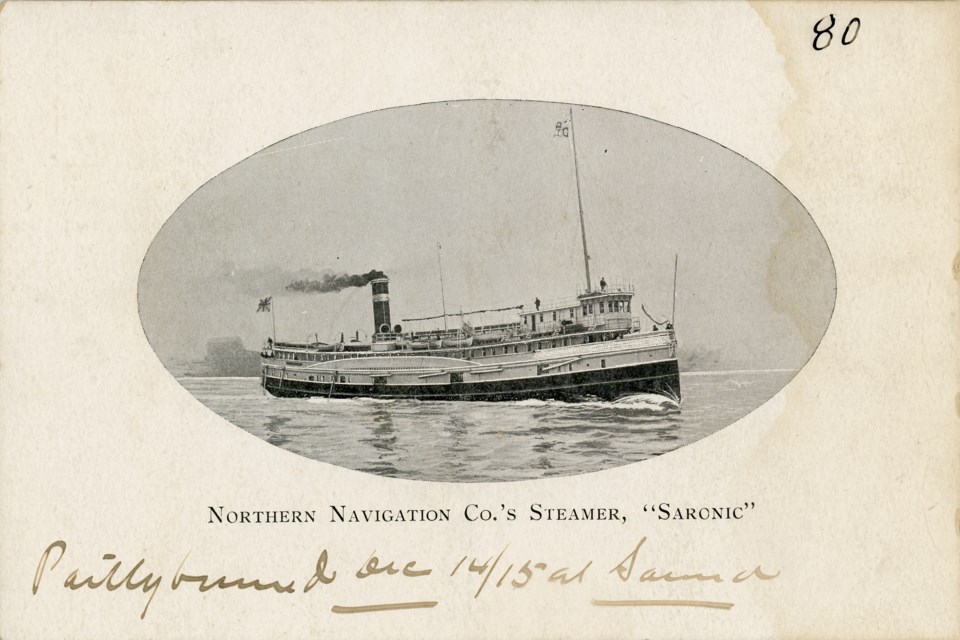This week's Remember This series features a ship whose beauty was regarded highly enough to land it on a bank note.
The wooden passenger and freight propeller Saronic was built as the United Empire in 1882 by the Dyble and Perry Shipyard in Sarnia, Ontario, for the Northwest Transportation Company.
To mariners, she was familiarly known as “Old Betsy” and was held in such high regard that her likeness appeared on the Dominion of Canada’s four-dollar note in 1902 (see second photograph). In 1899, United Empire came under the ownership of the Northern Navigation Company when the latter was absorbed by the Northwest Transportation Company.
Between 1905 and 1916, the vessel sailed under the name Saronic and was no stranger to the residents of Collingwood. A variety of photographs in the Huron Institute’s collection show Saronic operating out of the harbour under the Beatty Line in the 1903/04, 1908, and 1909 seasons.
In 1909, the Northern Navigation Company’s fleet consisted of the Lake Superior Division: Huronic, Saronic, Doric, and Ionic; and the Georgian Bay Division: Majestic, Germanic, City of Midland, and City of Windsor. The relocation of the company’s head office from Collingwood to Sarnia in 1909-1910 led to the dispersal of the Georgian Bay fleet.
The Saronic was partially damaged in the same fire that devastated the Collingwood-built steamer Majestic in Sarnia in 1915. The date of the fire, Dec. 14, 1915, is recorded in ink on this week’s featured postcard. By this time, the Northern Navigation Company had been acquired by Canada Steamship Lines.
Saronic was rebuilt as a steam barge for the grain trade in 1916; however, in the same year she was stranded in Lake Huron on Cockburn Island and damaged by a fire that broke out after running aground. Saronic was abandoned to the underwriters as a total loss.
In 1917, the hull was sold to W. Schlosser of Milwaukee and was converted into a barge used for the transport of pulpwood for the Detroit Sulphite Company. Operating under a new name, W.L. Kennedy, she was abandoned in the Detroit River, near Amherstburg, Ontario, in 1924.
An oil painting of Saronic by W.D. Bryan is currently on display in the Collingwood Museum gallery, alongside eleven others that capture some of the vessels that once plied the waters of Georgian Bay.
Remember This is a weekly series of historic photographs submitted by the Collingwood Museum to CollingwoodToday.ca. These photographs were originally collected and documented by the Huron Institute in an historical catalogue entitled Huron Institute Paper and Records: Volume III. Much of Collingwood’s early history has been preserved due to the dedication and foresight of the early museum’s founders, namely its secretary-curator David Williams, upon its establishment in 1904.



